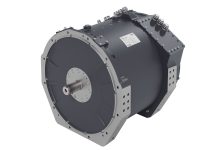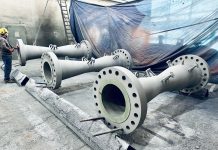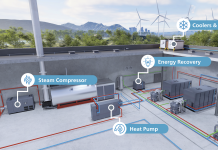Aldo Biraghi –
An Italian excellence in the hydraulic equipment on board, from America’s Cup to large sailboats.
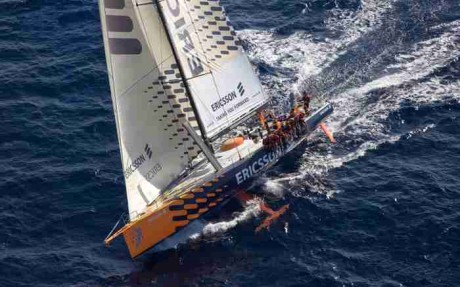
There is a sophisticated and demanding market, which requires special equipment which is a concentrate of technology, in which a small company from Ronco Briantino (MB) has a consolidated leadership worldwide. We’re talking about Cariboni a reality dedicated to the design and production of equipment for on-board drives on large sailboats for pleasure or competition, nowadays all controlled by hydraulics.
The company has two subsidiaries in the United States and in New Zealand and five other distributors among Italy, United Kingdom and Spain. In the next edition of the America’s Cup 2013 (from 7 to 22 September in San Francisco) three out of four teams in competition, with 72-feet catamarans, are equipped by Cariboni: Luna Rossa, Team New Zealand and Artemis. Moreover in this year’s Volvo Ocean Race, four out of six boats in competition are equipped by Cariboni.
A very particular production
Cariboni equipment range is all-inclusive: from manual distributors to hydraulic cylinders, from jib rollers with hydraulic cylinder for the adjustment of stay tension and drum to reel up the rope to control units and complete hydraulic groups developed on request. The most significant and brilliantly solved applications include a tilt keel and entire hydraulic system for its operating (fig. 1). At the base of their success there is a professional and flexible technical office, continuously engaged in equipment customization developed on demand for specific boats and produced in a few units, which require accurate tune-ups, tests and prolonged fatigue tests in order to guarantee durability and reliability at the highest levels.
The hand-pumps produced by this company include IPR pumps that combine two fixed-calibration exhaust valves; they work up to 300 rpm and allow three different flow rates (fig. 2). Initially, the three cylinders work together (total 20.86 cm3/rev; after, as the pressure increases, the first and then the second stage are cut out, with no operator intervention, leaving the smallest cylinder (4.52 cm3/rev) that reaches 700 bar.
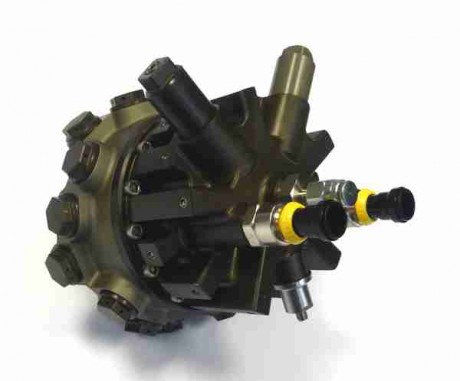
On these big boats weight is very important factor for each stage of the project. «For use on boats that must be lightweight we are obligated to pursue all solutions that allow us to reduce the weight, – says owner Gianni Cariboni – and concerning the cylinders field I think we’re anticipating a trend towards lighter equipment that will involve also mobile machinery industry in the near future. In addition, products must have more reduced dimensions. On racing boats high pressure up to 700 bar, is required for the reduction in volumes and its use is supported by the presence of a highly professional team on board. On pleasure boats pressure typically doesn’t exceed 500 bar». Concerning in-house equipment “everything starts from the fact that on the market there are no products able to completely satisfy our needs – continues Gianni Cariboni – also for manual pumps, those that are on the market must work at a certain minimum speed, which isn’t reached on racing boats. Instead in our pumps each piston has its own seal and this allows us to have high pressure and flow rates even at low speeds.
Magic Double: a very special cylinder

Magic Trim (a Cariboni patent) was created in 1998 in order to control the mainsail sheet’s trimming. Before Magic Trim, a cylinder that worked in traction with a block and tackle system was used to multiply the force. The limits were that only the cross section of the cylinder operated to trim, and to release the mainsheet high flow rate was needed on the top. In addition the load on the cylinder and its anchorage was multiplied (by as much as four) and this demanded very strong anchorages on a boat that needed to be as light as possible. Caraboni’s solution was Magic Trim, which was in effect a reversed block and tackle: tension acts on the bottom end and absorbs the multiple effect of the traction (fig.3). This cylinder is thus easier to fix to the structure of the boat, which only has to bear the effective load of the mainsheet. When it is eased, which has to be done very fast, the cylinder retracts and the flow rate operates on a section that is generally 1/5 of that on the top side, and this means lower flow rate.
- Fig.4 – Section of the Magic Double cylinder’s central manifold. On a single block made of aluminum alloy there are the oil supply, the safety valves and ball valves controlling both cylinders.
Considering the ways in which mainsheets are used, with initial fast recovery and low load that progressively increases to the maximum, Magic Double was developed, which is the combination of two independent opposing cylinders. In the first phase of traction only the cylinder with 4:1 multiplication ratio operates (double mobile block, smaller load and greater speed); when it arrives at the bottom of its stroke the chamber is blocked by an electric valve and the second cylinder, on the other side, starts operating. This cylinder, despite having the same diameter as the first, has 2:1 multiplication ratio (single mobile block) and thus allows a double max load compared with that of the first cylinder. Typical working pressure is 250 bar but it must be taken into account that at the bottom of the first cylinder the pressure doubles in the extension phase of the second cylinder when the chamber is compressed.
The central manifold, in 7075 aluminium alloy, is another exemplary invention by Cariboni. It has a single oil intake and contains the bases of both cylinders and the systems for controlling, distributing and containing the oil needed to move them. Here two cartridge safety valves (Hawe MVE6B) are installed and three hermetically sealed three-way directional electric valves (Hawe BVE3-R). There are also two outlets for the signal of the two linear transducers, that are indispensable because the whole hydraulic system is managed by a Plc which controls the cylinders’ position and speed.


